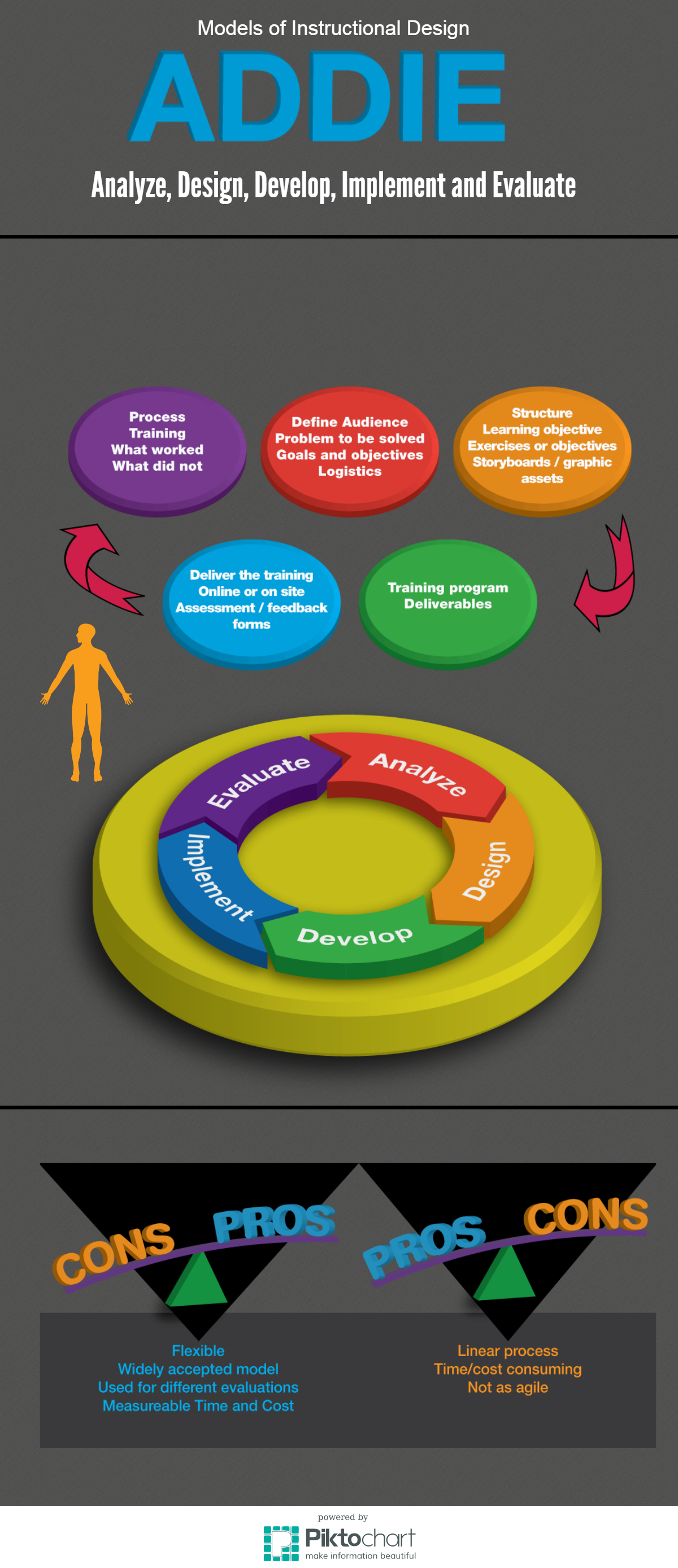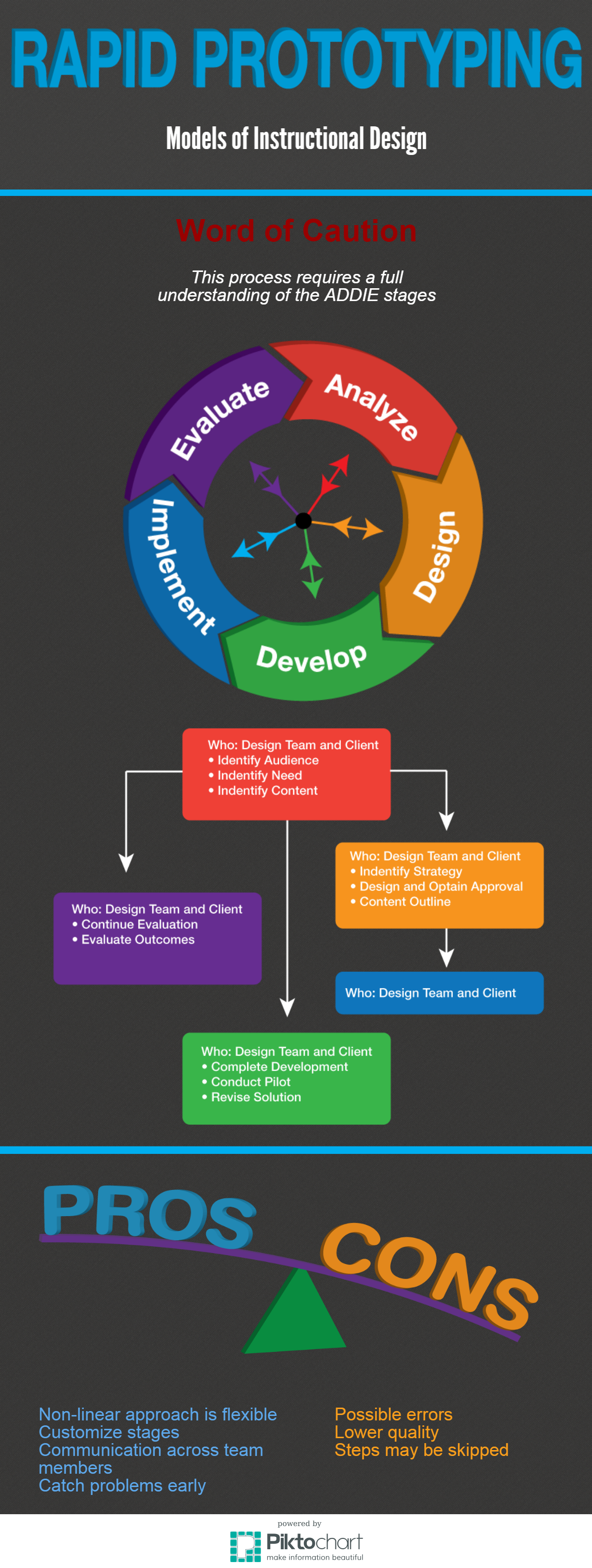Instructional Design Theories
During this week you will learn about, study and analyze two popular instructional design models. You will then create posters that will visually and verbally articulate how each model functions in the process of designing instructional materials.
My objective for this Piktochart was to create a digital poster that engaged the viewer but also gave them the necessary information on the different therories of Instructional Design in a concise manner.
The ADDIE, SAM, Gradual Release, and Rapid Prototyping Piktocharts are designed to be used in professional development trainings as well as a reminder for the designer. The audience consists of educators of instructional interfaces.
The technology utilized was Piktochart, Photoshop, and Illustrator.

In the ADDIE model, each step has an outcome that feeds into the subsequent step.
Analysis > Design > Development > Implementation > Evaluation

SAM is a rapid development model that uses a continuous iterative process throughout the lifecycle of development rather than the “one step at a time in three-quarter time” model.

The gradual release of responsibility model of instruction requires that the teacher shift from assuming “all the responsibility for performing a task … to a situation in which the students assume all of the responsibility

The overlapping boxes are meant to represent the fact that the various processes do not occur in a linear fashion. In other words, the analysis of needs and content depends in part upon the knowledge that is gained by actually building and using a prototype instructional system.